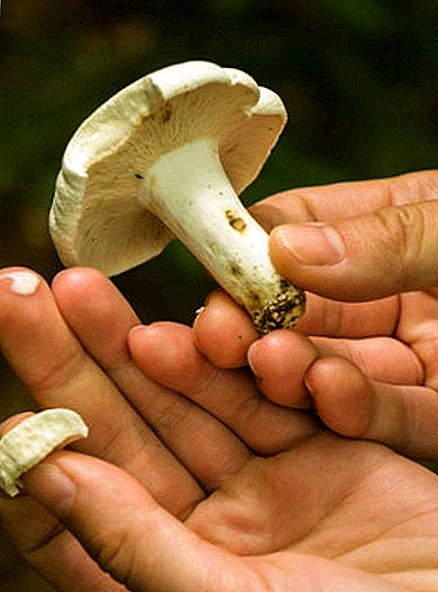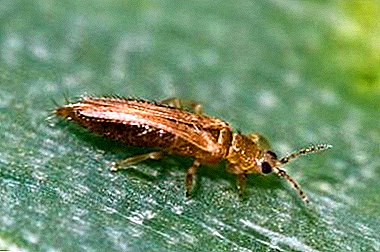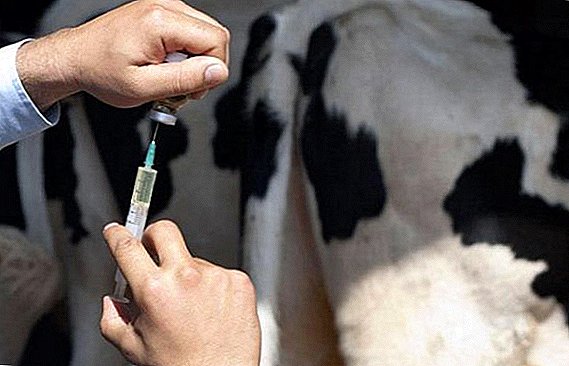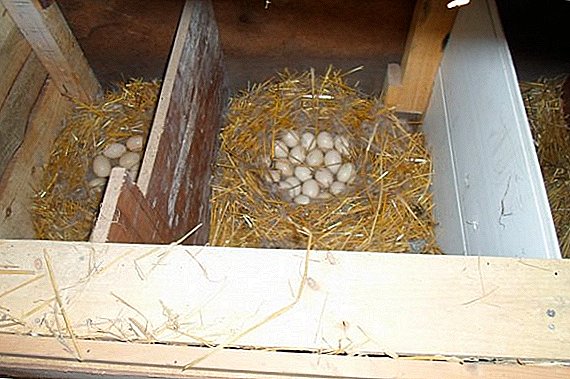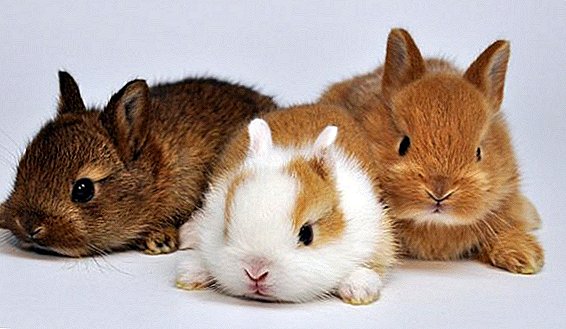 Decorative rabbits usually appear in the homes of those people who cannot get a cat or a dog, but dream of a furry friend. These cute creatures in the care are not complicated and not expensive. You can keep them in a small cage, and they can stroll through the apartment. Among the decorative breeds of rabbits, dwarfs, especially colored ones, are very popular. We will tell about them in our article.
Decorative rabbits usually appear in the homes of those people who cannot get a cat or a dog, but dream of a furry friend. These cute creatures in the care are not complicated and not expensive. You can keep them in a small cage, and they can stroll through the apartment. Among the decorative breeds of rabbits, dwarfs, especially colored ones, are very popular. We will tell about them in our article.
Description and Features
Let's start the acquaintance with this cute creature with a description of his appearance and character.

Standard
According to the generally accepted European standard, the features of the appearance of this breed are as follows:
- weight - an adult individual must weigh 1100-1250 g, for example, weight up to 1.5 kg;
- torso - strong, compact;
- paws - small, short;
- neck - so short that it is almost not noticeable;
- ears - no longer than 5.5 cm, upright;
- head - rounded, large, with a flat muzzle;
- eyes - large, slanting, dark color;
- tail - short, tightly pressed to the body;
- wool - thick, dense, shiny.

Color
Representatives of the breed are painted in various colors. The most popular and famous:
- Russian, Thuringian, Siamese, Japanese;
- chocolate and blue mardera;
- fiery black and chocolate;
- gray, silver, blue;
- chinchilla, squirrel;
- white-and-white (chocolate, blue and black);
- havana, ren, suite.
Did you know? A pure white fur coat is quite rare in a dwarf colored rabbit and is very much appreciated by rabbit breeders.
Character
Representatives of this breed are very peace-loving creatures. They quickly get used to the owner and are happy to be given in their hands, they love to be petted and played with them. If desired, eared can be taught to greet you by standing on your hind legs and other tricks.

In general, the character of dwarf rabbits reflects the character of their owners. If the owner belongs to the pet with good, caresses him, the animal responds in the same way. For a bad attitude and care, the animal responds with aggression. But attacks of aggression occur in those pets who live in love and care. Rabbits can show aggression when they feel pain, danger, in the mating season, if there is no partner nearby.
Check out the breeds of ornamental rabbits.
The right choice when buying
Pet selection should be given maximum attention. You should not get the first one. View all the options and choose the healthiest. When choosing, consider the following:
- The rabbit must be at least 45 days old. It is better not to take very small ones if you do not have experience in caring for them.
- The baby must have all vaccinations (myxomatosis, UGBC) and dewormed.
- Find out the animal's pedigree to see if it has any hereditary diseases.
- A healthy rabbit active, with shiny eyes and a fur coat. He has no discharge from the nose, eyes, anus and fur all over the net.
- A healthy animal has clean eyes, paws, and ears. The latter should be without ulcers, scratches, seals, scabs.
- The rabbit does not have to constantly shake his head and scratch his ears. Otherwise, it indicates the presence of a tick.
- Choosing a pet, carefully examine his teeth and claws. You should also look at the condition of the skin. To do this, swipe your finger against the coat. The skin should be free of blemishes, bumps and damage, as well as parasites.

Did you know? The dwarf colored rabbit was bred by the German rabbit breeder Hoffmann in 1938. He turned out by crossing the outbred rabbit with the red-eyed Hermelin.
Cage or aviary
Choosing a pet, you need to think where he will live. You can buy him a cage or an aviary. Each type of house has its positive and negative sides.
The advantages of the cell:
- takes up little space;
- the animal is isolated, which means that the probability of being injured is minimal;
- convenient to move from place to place.
- the cage needs to be cleaned daily, and this is not very convenient;
- the rabbit needs walking, but if you let him wander around the apartment, he can chew on everything;
- should be large enough to fit a house, a toilet and a feeder.

Pluses aviary:
- spacious, so the animal can safely walk on it;
- convenient to clean;
- in a large area it is easy to place a house, feeders, toilet and play area;
- in one enclosure can live immediately several females or females and males, if they are all sterilized.
Learn how to feed and feed ornamental rabbits.
Cons aviary:
- to place it you need a lot of free space;
- suitable for keeping eared, only if the house has no other animals and children.

Home Improvement
It is boring for a decorative rabbit to sit in one place all the time, and an immobile lifestyle can lead to a pet's obesity. Therefore, he must have a place where he can throw out his energy. For this it is best to equip the playing area. It can be various plastic tunnels, stairs, mink-boxes.
If you want to pamper your pet, you can build a hammock for him. Here he will rest in the daytime. Hammock is easy to sew by yourself or you can buy at the pet store.
Find out at what age rabbits shed and how to care for them, what affects life expectancy and how long the rabbits live on average.
Obligatory element dwelling rabbits - tray. Eared quickly get used to going to the toilet in one place. As a tray, you can use a plastic container or a cat tray. It is filled with large sawdust and replaced 2-3 times a week.
In nature, eared live in burrows. This is their home and a place where they can hide from predators, so it’s imperative for your pet to build something that looks like a burrow. It can be a wooden box with a hole, a thick cardboard box or a special pet shop house. Inside the animal itself will equip its shelter.

For the feeder, it is permissible to use any heavy container that the animal will not be able to turn over, or a special feeder for rodents, bought in a store and fixed on the cage grid. The ideal drinking bowl for rabbits is a drinking bowl-dropper. It hangs on the grill and supplies water dosed. It is impossible to turn over this capacity, and the water always remains clean.
Trouble can happen even with the most careful care, find out what to do with sun and heat stroke in rabbits, finding fleas in rabbits, sneezing rabbit.
Conditions of detention
Having decided on the type of house for a pet, you need to think about where it is better to place it. Rabbits love warmly, but at the same time do not tolerate stuffiness. Therefore, in no case can they be kept in the sun. They can easily get a heat stroke. Also badly tolerate drafts and dampness. They do not like bright light and need peace and quiet.
The optimal temperature for a rabbit is + 18 ... +20 ° С and humidity is no more than 50%. In addition, the room should always be ventilated.
The floor of the open-air cage or cage should be lined with sawdust, straw, moisture-absorbing granules. The litter needs to be changed every other day.

Walking around the apartment and walking in open space
So that the big-eared could throw out their energy, it must be periodically released to run around the apartment, if conditions allow. But before you let go of the animal to explore your home, you must remove all the wires and other things that your pet can chew. Also on his way should not be found items that the animal can get hurt.
Important! Dwarf colored rabbits prefer nocturnal lifestyle, so during the day they should be disturbed as little as possible.
Releasing eared for a walk, do not leave it unattended. To make it easier for him to get used to the situation, take him in your hands more often, stroke, soothe, talk to him. But do not hold it in your hands for a long time, because if the rabbit tries to jump, then it can get a serious injury.

Care rules
In order for the pet to live for a long time and not give you any extra trouble, it is necessary to regularly clean the house.
- The litter is replaced 2-3 times a week.
- Drinkers and feeders are washed every day and are filled with fresh food, water.
- The filler in the toilet is replaced as pollution.
- Disinfection of cells and equipment is carried out every week. The state of the cell and its entire contents is also examined. If there are any defects, breakages, they are necessarily eliminated.
- Every week, inspect the ears, eyes, nose, anus and genitals of the pet. They must be clean.
- Monitor the teeth of the animal.
- Once or twice a month, trim the claws with a claw cutter.
- Weekly comb eared coat.
Did you know? The first breeds of dwarf rabbits were obtained in the 70s of the XIX century in Britain.
What to feed
Decorative colored rabbit is convenient to feed special dry food. They contain all the necessary nutrients, vitamins, minerals. The dosage of the product is indicated on the packaging.

However, eared animals are herbivores, and their diet should always contain juicy food, so ideally your pet's daily ration should be:
All breeds of rabbits are very sensitive to nutrition, pay attention to the following questions: can rabbits eat nettle, do rabbits eat burdocks, do rabbits eat rabbits, what grass to feed rabbits, how to buy or prepare hay for rabbits, what not to feed rabbits.
| Feed Type | Permitted Products | Daily rate per individual |
| Cereals | Combined mixes, rolled oats, wheat flakes, whole-grain pasta (rarely and without salt), sunflower meal, corn, barley. | Up to 30 g (1-2 tbsp.). Meal should not exceed 13% of the volume. Barley and corn - no more than 20% of the volume and no more than 2-3 times per month in pure form. |
| Greenery | Hay, young nettle, dandelions, meadow grass, burdock, silverweed, quinoa, plantain, clover, carrot tops, leaf lettuce. | Unlimited The basis of the diet. You can not give wet rain, unwashed greens. |
| Branches (for teeth) | Willow, birch, maple, lilac, raspberry, pear, alder, rowan, apple. | 1-2 medium branches, washed and dried. |
| Roots | Carrots, cabbage (white cabbage, cauliflower, broccoli, Beijing), beetroot, young radish, Bulgarian pepper, seedless cucumbers, sweet turnip | 2-3 small pieces no more than 2 times a week so as not to cause an upset stomach. |
| Fruits | Apples, pears | 2-3 small pieces no more than 2 times a week so as not to cause an upset stomach. |
| Berries | Any | 2-3 small pieces no more than 2 times a week so as not to cause an upset stomach. |
| Mineral Supplements | Mineral stone, bone meal, chalk. | The stone hangs or lies in a cage all the time. Flour and chalk sprinkle hay with a small pinch. |

Daily rate should be divided into 3-4 meals.
Important! Any product must be fresh and of high quality. All perishable products are not left overnight. Fresh in the morning.Dwarf rabbits can not:
- chocolate;
- candies;
- any sweets;
- potatoes;
- prepared human food;
- bread and pasta made from high-grade flour.
How to water
Water should be given to rabbits clean, separated and filtered with a temperature of + 15 ... +18 degrees. She poured into drinkers, droppers - plastic bottles with a metal spout.
Learn how to make a rabbit feeder, how to make a drinker for rabbits.
To regulate the flow of water can a ball or a button. When the rabbit is thirsty, it is enough for him to lick the metal tip of the drinker, hitting the ball or the button with the tongue. From such a container water will never spill, and it is easier to keep it clean. 
Rearing
If you want to breed dwarf colored rabbits, then you will only need one male for 3-4 females. Eared puberty attain three months of age. From this point on, they must be kept in separate cells in order to control reproduction.
They can happen from the seventh month of life. The first mating must be before the age of one. The last time you happen to animals in the third year of their life.
For mating, the female sits in the cage of the male, and not vice versa. After the first mating, the male is left in the cage for another hour to repeat the process, and then deposited. The admissible frequency of mating is once every two days.
Find out when it is possible to let the rabbit on the mating, how long it lasts and how to determine the rabbit suckering, when it is possible to set the rabbit away from the rabbit, what and how to raise the rabbit without the rabbit.
If the mating was successful, the babies will be born in about 30 days. In one year, the female is able to bring 6-9 offspring. In one litter can be from 2 to 8 rabbits.
The behavior of the rabbit itself will help determine more accurately the time of the appearance of the rabbit. Usually a few days before giving birth, the rabbit begins to build a nest. To do this, she puts in a specially designated place of hay and begins to pluck her stomach, extracting fluff. Rabbits are born in individual fetal bubbles, which the female eats, while gnawing the umbilical cord. 
While the rabbit is breeding her offspring, her diet should be maximally enriched with juicy food: salads, grass, carrots. You need to give only quality products. Also, the future mother should be placed in a quiet, peaceful place and not to disturb once again.
When babies are born, it is important to control their condition. For this you need to periodically open the nest with clean hands and recount the cubs. They also look at the state of their navel, abdomen, and the degree of fatness.
Usually rabbit itself feeds its offspring up to one and a half months. From three weeks of age, babies can get out of the mink and start eating on their own. At the age of two months they are usually separated from the mother.
Did you know? The bunny rabbit usually spends 5 minutes a day feeding its children.On average, small rabbits live for 5-7 years, but by providing proper care for a dwarf eared bird, you guarantee a long life for your pet. Subject to all rules, the animal will be able to live to 12 years.
Color dwarf bunny color chocolate tan: video



